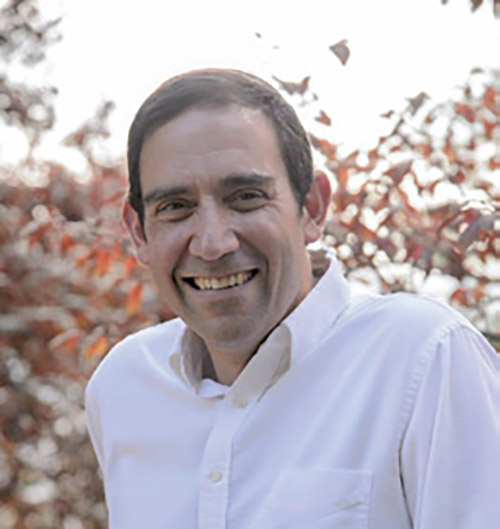
Moshe desperately pleads with God to be granted entry to the land he has coveted for 40 years; despite his furious prayers his request is denied. Despite the power of prayer to sway the Divine will, God reserves the right to deny our petitions. Sometimes He replies with a “yes” and other times with a “no.” Still other times He replies with a “yes” in a manner that we can’t fully comprehend. Either way there are no guarantees.
Beyond his desire to visit the Land of Israel in general, Moshe specifically craves a visit to the Temple Mount. Unlike the Avot—each of whom visited this hallowed site—Moshe was born and bred in Egypt and could only dream of ascending this mountain of God. Tragically, any actual visit remained beyond his grasp. The incredible and historical opportunity we enjoy to land on this site and caress the Kotel stones eluded the greatest man to ever live.
When expressing his desire to ascend this mountain, Moshe refers to it by the very odd nickname of Lebanon: “Hahar hatov hazeh v’halevanon.” Why is this great mountain Lebanon? What does the term Lebanon capture regarding the function of Jerusalem and the great mountain of God?
Our Chazal offer two different “takes” on the symbolism of the name Lebanon. Firstly, the word derives from the three-letter word “lavan,” or white. The Mikdash “whitens” people’s personalities by enabling recovery from sin and moral collapse. In the aftermath of moral or religious failure, the Temple offers korban opportunities and, of course, cleansing and catharsis. Guilt is a very deep and meaningful emotion of the religious heart. The ability to accept guilt, process it, and recover from it is crucial to a well-balanced religious life. In addition to the whitening experience of a sin-offering, the Mikdash facilitates a broad range of korbanot and ceremonies. Taken more generally, the term Lebanon refers to the entire network of ceremonies and rituals conducted in the Mikdash. These rituals allow man to achieve expanded religious consciousness and spiritual promotion. Lebanon allows man to transcend his pedestrian lifestyle and ascend to higher ground.
The second connotation of Lebanon stems from the two-letter Hebrew word “lev,” or heart. The Mikdash is a national epicenter that rivets the hearts of an entire nation. It is a rallying point for public assemblies such as aliyah l’regel and numerous other national gatherings. Even when Jews are geographically distant from this mountain their hearts migrate and their imaginations voyage to this historical platform of Judaism. The mountain doesn’t merely facilitate rites and rituals but also creates a gravitational pull upon the hearts of an entire nation.
In a perfect world these two functions of the mountain nicknamed Lebanon overlap. It serves as a national epicenter precisely because it enables religious experience. Judaism doesn’t sever religion from reality nor does it insulate holy sites from the everyday routine of nationhood. Our Temple Mount serves as a religious site as well as a nerve center for the entire people. It is both a holy site as well as a national capital.
However, in our current state these two agendas do not always mesh. Having returned to Jerusalem and to this mountain, we aim to infuse it with sanctity, gravitas and ritual. Yet, for many, the city inspires national and cultural identity even in the absence of ritual manifestation. For those less interested in ritual, the mountain is still a rallying point for national identity. Sculpting these sites as sacred ground as well as a national epicenter is not always easy.
Last year the World Cup of Soccer was streamed live and projected on the walls of the Old City of Yerushalayim. To some, this trivialized the gravitas of the Old City by converting its walls into movie screens. How could a site so revered be so cheapened by being converted into a drive-in theater? Others were pleased that the Old City drew thousands of Jews to a common cultural event. This episode was a microcosm highlighting the clashing agendas of Lebanon.
The dilemma of streaming a soccer match on the ancient walls of Jerusalem pales in comparison to a more explosive issue: the identity of the Kotel. This Wall has served as the target of Jewish dreams for centuries and it possesses a magical sway upon the Jewish imagination. Returning to the Wall in 1967 electrified the Jewish spirit across the world; even non-religious Jews felt their spirits ignited. However, we face a stiff challenge in converting this Kotel into a site of sanctity as well as a magnet that unites all Jews. As Orthodox Jews we are torn with the following conundrum: How can we create meaningful space for a diverse spectrum of Jews at the Kotel without compromising the integrity of the site and the ambience of prayer that should characterize the Mikdash? We are deeply committed to our traditions and the decorum that has always governed our prayer experience. Yet we also are deeply committed to carving out space for every type of Jew who we hold so dear. Our love of Jews must clearly supersede our love of stones! So many of those Jews have different ritual norms and many have little interest in ritual at all. Their vision of the Kotel is very discrepant with our vision of traditional prayer. We find ourselves torn by these conflicting agendas. Each agenda on its own is crucial, but sadly, in our current context, we haven’t discovered a comprehensive formula toward achieving both agendas for the Kotel.
Perhaps a comprehensive solution is unattainable in our generation and will only evolve with the passage of time. Either way, it is crucial that we acknowledge the importance of the two roles of this mountain and, to the best of our abilities and within the constraints of our sacred traditions, attempt to enable both functions of this mountain called Lebanon. All the while we continue to pray that one day—hopefully in the not-too-distant future—these two agendas will converge. One day our Wall and our city will synthesize each meaning of Lebanon. These sites will serve as the nerve center of the Jewish world because they are sacred sites of ritual and korbanot.
By Moshe Taragin
Rabbi Moshe Taragin is a rebbe at Yeshivat Har Etzion, located in Gush Etzion, where he resides.











